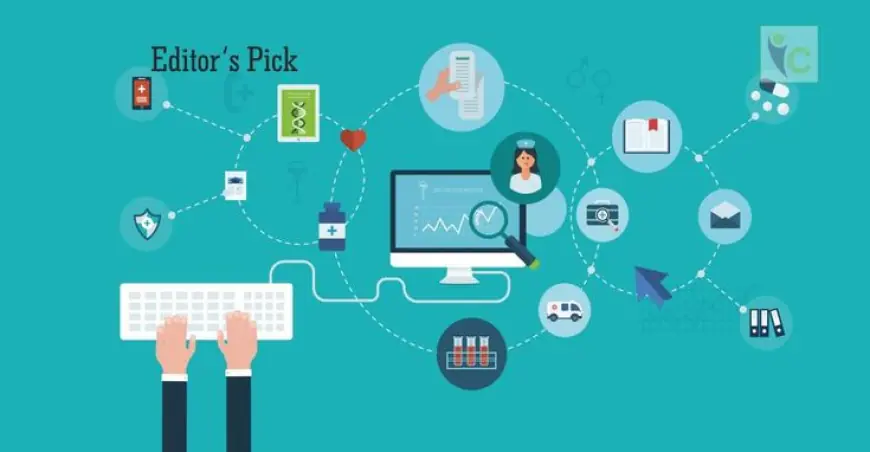Electronic Medical Records: Revolutionizing Healthcare One Click at a Time
In today’s technology-driven world, the medical profession is undergoing a profound transformation. Among the most impactful innovations is the adoption of Electronic Medical Records (EMRs), a digital solution that is not only streamlining operations but also redefining the traditional doctor-patient dynamic.

The evolution of technology has permeated every aspect of our lives—from the way we shop and socialize to how we learn and do business. Nowhere is this digital revolution more impactful than in healthcare. At the center of this transformation are Electronic Medical Records (EMRs)—a powerful tool that is reshaping how medical professionals interact with patient information and deliver care.
Understanding Electronic Medical Records
Electronic Medical Records, commonly referred to as EMRs, are digital versions of the traditional paper charts found in doctors’ offices, clinics, and hospitals. These systems are designed to store patient health information electronically, including medical histories, diagnoses, medications, immunization dates, allergies, lab test results, radiology images, and even progress notes.
What differentiates EMRs from their paper counterparts is their accessibility and ability to enhance the quality of patient care. EMRs make health records readily available to authorized personnel at the point of care, enabling quick and accurate decisions.
A Historical Perspective
Before the rise of EMRs, healthcare providers relied heavily on paper records. These documents were often scattered across departments, leading to miscommunication, lost files, and treatment delays. As early as the 1960s, healthcare institutions started experimenting with digital record-keeping, but it wasn’t until the 2000s—with the advent of robust IT systems and government mandates—that Electronic Medical Records became mainstream.
Key Benefits of Electronic Medical Records
1. Improved Efficiency and Accuracy
Manual data entry and retrieval can be time-consuming and error-prone. EMRs eliminate this by offering structured, easy-to-search digital records. This streamlined workflow allows healthcare providers to spend more time with patients and less time on paperwork.
2. Enhanced Coordination Among Providers
In complex cases involving multiple specialists, EMRs provide a centralized hub of patient information. This allows different care providers to collaborate seamlessly, ensuring continuity of care and reducing redundancies like duplicate tests or medications.
3. Patient Safety and Preventive Care
With features such as automatic alerts for allergies, drug interactions, or overdue checkups, Electronic Medical Records actively help providers prevent medical errors and encourage early intervention.
4. Data-Driven Insights
EMRs are rich sources of data that can be analyzed to detect patterns, monitor population health trends, and improve treatment protocols. Healthcare systems can use this data to optimize resource allocation and track the effectiveness of public health initiatives.
EMRs and Patient Empowerment
Today’s healthcare environment emphasizes patient involvement and transparency. EMRs play a critical role in this shift by providing patients with direct access to their health records through patient portals. These portals allow individuals to schedule appointments, review lab results, request prescription refills, and communicate with providers—all from their smartphones or computers.
This empowerment leads to better patient compliance, improved health outcomes, and greater overall satisfaction with care.
Implementation Challenges
Despite their advantages, the adoption of Electronic Medical Records hasn’t been entirely smooth.
1. High Upfront Costs
Purchasing, installing, and maintaining EMR systems requires a significant financial investment. Smaller practices may find it challenging to cover these costs, despite long-term savings.
2. Training and Workflow Disruption
Introducing new technology inevitably involves a learning curve. Physicians and staff must undergo training, and during this transition, workflows may be temporarily disrupted.
3. Interoperability Issues
One of the biggest challenges in EMR usage is the lack of standardization between systems. Not all EMRs can communicate with each other, which can hinder data exchange between different healthcare entities.
4. Privacy and Security Concerns
Protecting sensitive medical information is paramount. EMRs must comply with data protection regulations like HIPAA in the U.S., and robust cybersecurity measures are required to prevent data breaches.
The Role of EMRs During the Pandemic
The COVID-19 pandemic served as a stress test for healthcare systems worldwide—and Electronic Medical Records rose to the occasion. They enabled healthcare providers to transition quickly to telemedicine, supported contact tracing and outbreak monitoring, and facilitated mass vaccination tracking. EMRs proved to be essential tools for crisis response and public health planning.
The Future of Electronic Medical Records
Looking ahead, EMRs are expected to evolve in exciting ways:
- Artificial Intelligence Integration: Predictive analytics can identify patients at risk of complications or readmissions.
- Natural Language Processing (NLP): NLP tools can extract information from clinical notes, improving documentation efficiency.
- Wearable Device Integration: Real-time data from fitness trackers and medical devices can be fed into EMRs to offer a fuller picture of patient health.
- Blockchain Security: Decentralized systems may soon be used to enhance the security and interoperability of EMRs.
Electronic Medical Records are no longer a luxury or a future consideration—they’re a necessity. They have redefined how medical information is stored, shared, and utilized, improving efficiency, reducing errors, and empowering both providers and patients. As technology continues to advance, EMRs will play an even more vital role in shaping a smarter, safer, and more patient-centered healthcare system.
Get More Insights - Electronic Medical Records
Get This Report in Japanese Language - 電子医療記録
Get This Report in Korean Language - 전자 의료 기록
About Author:
Vaagisha brings over three years of expertise as a content editor in the market research domain. Originally a creative writer, she discovered her passion for editing, combining her flair for writing with a meticulous eye for detail. Her ability to craft and refine compelling content makes her an invaluable asset in delivering polished and engaging write-ups.
(LinkedIn: https://www.linkedin.com/in/vaagisha-singh-8080b91)
What's Your Reaction?
 Like
0
Like
0
 Dislike
0
Dislike
0
 Love
0
Love
0
 Funny
0
Funny
0
 Angry
0
Angry
0
 Sad
0
Sad
0
 Wow
0
Wow
0










































